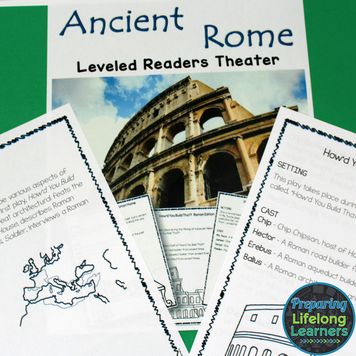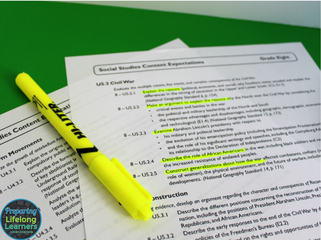|
It's no secret. I LOVE reader's theater. We read them for just about every unit or topic we cover in social studies. In case you are not familiar with it, reader's theater is a script that students read. Oftentimes it's adapted from a traditional story or a book read in class. But, it can also be a script written to teach about a specific topic or unit. Some of you may be thinking that you've heard of reader's theater, but isn't it for younger students? Here are 10 reasons I love to use reader's theater in my middle school classroom! 1. They generate interest in our topic because they are fun to read! 2. They are a break from traditional school work. 3. Students get to interact with their peers. Always a positive for middle school students. 4. Reader's theaters place the students into the time and/or events we are learning about. 5. They help students see things from a different perspective. 6. Not only are they learning social studies content, but they are also practicing their fluency and reading out loud. 7. They are great for placing non-leaders in leadership roles. 8. Reader's theaters are great to review content. 9. They are also great to preview content. 10. Finally, they are great for enrichment. Sometimes a topic is not necessarily tested or a major standard, but interesting for students to learn. Reader's theaters are great for those topics! Not only are they educational but students love them. Often times they comment that they really understand our topic (now that they've read about it), or that they just can't get enough of reading the plays. I use them for the following topics:
Interested in using them in your upper elementary or middle school classroom? Check them out here, or click the shop button on our homepage!
0 Comments
How does a unit get created? This is a question that always comes up when talking about strategies or activities. So, today, I'll share a little bit about the process I use to create a unit for my social studies class. This is step one in the Backwards Design process. I don't get the luxury of starting from scratch. We are given the units with standards already attached. In another district I worked in, the social studies teachers met and grouped the standards together to form units. So, we can talk about both ways today. If you get the advantage of starting from scratch it can be more work, but nicer in the long run. When starting from scratch I print out all of the standards and either cut them apart, or place them onto something larger (like sticky notes). Then I start grouping them together with standards that make sense placed together. Sometimes there are standards that are thought of as enduring standards. Those are topics that are not taught as a unit, but themes and things the students should really be working all the time. Or, if they are placed into a unit they also should be working on them in other units. An example would be geography or map skills. In my current district we are given the units that already have standards attached to them (at one point there was a group or committee that created units). In this case I'm looking through the units and standards that are a part of our district curriculum and I want to make sure I understand, what do the students need to be able to do for this unit, what do they need to understand. This is just step 1 in the Backwards Design process. To see all of the steps I created this easy to read chart explaining all three steps. I think that it is easy to skip steps 1 and 2 if the district or school you work in has already created units, but without deeply understanding the units you are teaching, how will you decide on strategies and lessons that are meaningful and get the biggest bang for your buck?
|
MEET TIMI'm an 18 year veteran teacher that loves teaching, coaching, writing, and my family.
Archives
May 2022
|









